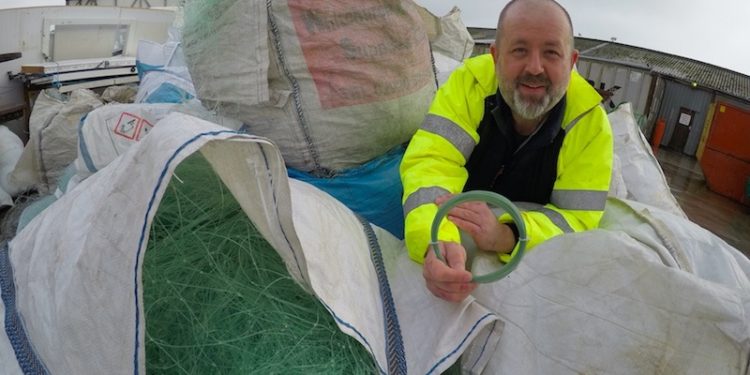The raw materials used by Newlyn specialist recycling company Fishy Filaments are the gill nets that pile up in bags on the quayside. The company is still in its early stages, recycling fishing gear to produce the high-quality filament that 3D printers require, and it’s a more complex business that it appears at first glance.
Hook & Net spoke to Fishy Filaments founder Ian Falconer, who is now establishing the company with an office and a workshop in Newlyn.
The focus of Fishy Filaments is on recycling nets to produce the high-quality filament needed for 3D printing, just as 3D printers are becoming increasingly accessible.
‘There’s regulatory pressure that is going to increase in the next few years. As part of Europe’s circular economy programme, single polymer plastics can no longer be disposed of as landfill. Landfill costs for other materials, such as polyethylene/polypropylene netting are going to be much higher,’ he said, commenting that this opens the way for recycling and using these materials.
‘There are several companies already recycling netting, and we’re the smallest and the most specialised.’
He said that Fishy Filaments does not pay for its raw material – and there are solid reasons for this.
‘The zero revenue model for raw material means that waste does not become a tradeable item. This isn’t us being cheap – it’s setting out to ensure that there isn’t a value attached to these nets,’ he explained.
‘We didn’t want to create a new market for waste, and put fishermen’s gear at risk by making them something worth stealing.’
Instead, fishing operators are provided with a way of passing on end-of-life fishing gear that is expected to become increasingly expensive to dispose of in future – and a warning of what is to come has already been received as China has closed the door to the unlimited import of material for recycling.
A growing awareness of the problem of waste plastic and an environment under which waste disposal is only going to become more expensive and regulated, coupled with the combination of rapidly falling costs for 3D printing and new materials becoming available indicates a positive future of 3D printing.
Check out the latest issue of Hook & Net for the two-part profile of Fishy Filaments









